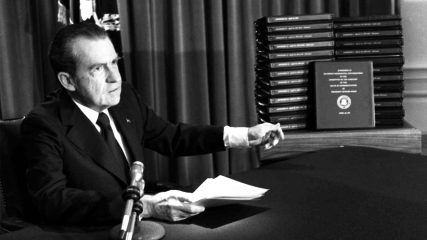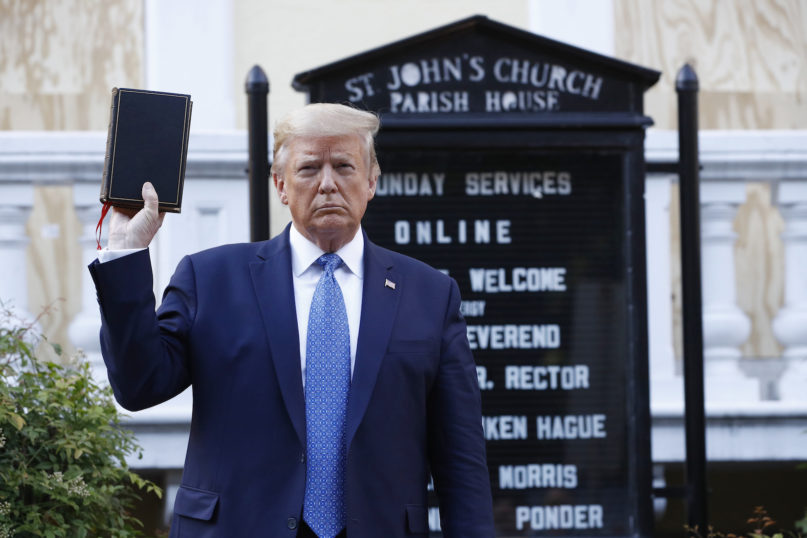(RNS) — In the early morning hours of May 9, 50 years ago, Richard Nixon visited the Lincoln Memorial in perhaps the strangest moment of his presidency. Accompanied only by his Filipino manservant, the White House doctor and a Secret Service team, Nixon made his way among demonstrators who were camped out at the memorial, thousands of whom had come to Washington for a protest against the Vietnam War, Nixon’s decision to bomb Cambodia and the killing of demonstrators at Kent State.
Although Nixon’s account of what he said that night paints a self-portrait of a strong leader dispensing important truths to his critics, those who heard him told the press that he rambled irrelevantly much of the time.
After increasingly perturbed Secret Service men finally bundled him back into his limousine, Nixon insisted on being taken to the Capitol, where he took a seat in the chamber of the House of Representatives, signed a Bible for one of the women cleaning up and then went to have breakfast at the Mayflower Hotel before returning to the White House.
The standard interpretation of the episode is that it shows a man unbalanced by the pressure of events, and that it marked a turning point toward increasingly erratic presidential behavior. I wouldn’t contest this view.
But compared with President Donald Trump’s walk to St. John’s Church on Monday (June 1), Nixon’s venture has something genuine, even noble, about it. Here was the leader of our nation, sufficiently troubled in his mind to venture out among his opponents, all but alone, and after a fashion to engage with them.

President Nixon gestures toward transcripts of White House tapes after announcing he would turn them over to House impeachment investigators and make them public in April 1974. (AP Photo)
Where Nixon went is also worth appreciating. Abraham Lincoln, the founder of his political party, had long been the central figure in America’s civil religion: the president who saved the Union, freed the enslaved, died a martyr’s death and vouchsafed to his people some of the most profound and inspiring words a country’s leader has ever written.
That Nixon felt moved to go to Lincoln’s shrine was deeply symbolic. Altogether, the episode is Shakespearean. By contrast, Trump’s stunt is the stuff of “Saturday Night Live.”
Here was a president, embarrassed by leaked reports that he’d scurried into the White House bunker in the face of protests outside, sending armed troops to forcibly drive off peaceful demonstrators so he could process across the street to stand in front of a damaged church and flaunt a Bible. To say that this was a photo-op is an insult to presidential photo-ops.
Trump’s people not only failed to inform church leaders that he was coming, they had clergy and laity forcibly expelled from the church patio, lest the president encounter them directly and, God forbid, inquire after the state of their building.
When Trump hefted the Bible and held it up, a reporter, imagining that the volume held some significance for him, asked if it was his Bible. “It’s a Bible,” the president grunted. So much for that. If Trump rarely darkens the door of a church, at least you can say he darkened this one.
Recalling that Hegel said somewhere that “All great world-historic facts and personages appear, so to speak, twice,” Karl Marx famously wrote, “He forgot to add: the first time as tragedy, the second time as farce.”
Case in point.






